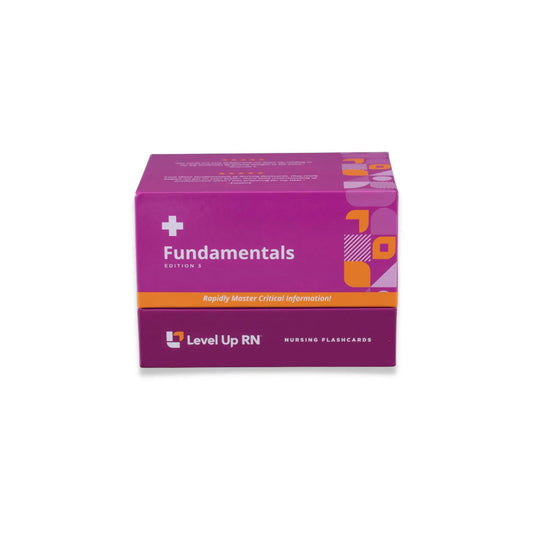Fundamentals of Nursing - Flashcards
This article and video covers respiratory and cardiovascular changes that tend to occur in older adults. You can follow along with our Fundamentals of Nursing flashcards, which are intended to help RN and PN nursing students study for nursing school exams, including the ATI, HESI, and NCLEX.
Respiratory changes in aging adults
Decreased lung capacity, decreased lung tissue elasticity, and weaker respiratory muscles all combine to increase the amount of effort it takes for a geriatric patient to breathe efficiently.
The patient may have an increase in their anterior-posterior chest diameter, as well as a decrease in the cough reflex. So it can become harder and take more effort for them to expel foreign material (cough stuff up). This increases the risk of infection.
Older patients are more likely to have respiratory infections (e.g., pneumonia) and abnormal breathing patterns (e.g., sleep apnea).
Cardiovascular changes in aging adults
Older patients are more likely to have a decrease in their heart muscle efficacy and strength. Because the heart is not pumping as efficiently and isn't as strong, this leads to a decrease in cardiac output.
An older patient may experience incomplete valve closure, which increases the risk of a heart murmur.
Because the blood vessels stiffen and calcify with age, this puts an older patient at a higher risk for atherosclerosis (a buildup of plaque on the arterial walls).
All of these factors lead to older patients having a higher risk for elevated systolic blood pressure. When the systolic blood pressure reading is high while the diastolic reading is in the normal range, this is called isolated systolic hypertension. (The opposite is also true; isolated diastolic hypertension is when only diastolic blood pressure is elevated—though this is more common in younger adults).
Older adults are at a higher risk for orthostatic hypotension.


